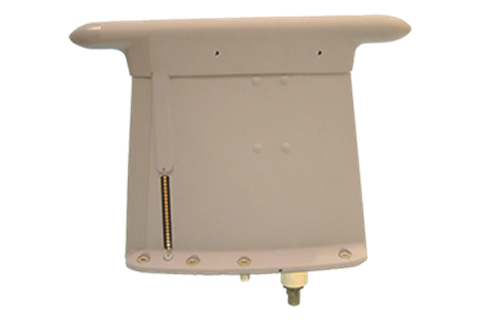Have you got the Q factor?
Tuneable antennas: what they are and how your aircraft could benefit from one

By the time this was developed in the 1970s, Chelton had revolutionised tactical air-to-air and air-to-ground communications and turned antenna-making into an art form. Up until Chelton’s pioneering solution, tuneable antennas needed a burst of transmission to be able to re-tune, which in turn gave away an aircraft’s position and left its communication systems vulnerable to jamming attacks. The revolutionary addition of a pin diode allowed the tuneable antenna to switch frequencies at great speed, enabling the aircraft to avoid detection.
In simple terms, a tuneable antenna contains electronics that allow the antenna to be ‘tuned’ to a particular frequency range on demand. This provides up to 15dB better gain at the lower end of the Very High Frequency (VHF) band compared to a passive blade antenna of equivalent size. Higher gain equals better communications range so tuneable antennas are ideal for applications where good performance in the low VHF frequency band is required but there is limited space available on the platform. A typical application example: a Search and Rescue (SAR) helicopter crammed full of communication, navigation and rescue equipment.

The Q Factor
The ‘Q’ of an antenna is the measure between the power stored in the reactive field and the radiated power. It is a measure of the bandwidth of the antenna relative to the centre frequency of the bandwidth it operates in. For example, if an antenna operates in the VHF band (30MHz – 300MHz), then the centre frequency would be the difference between the two end frequencies. In this case: (30+300)/2 = 165.
The Q would then be calculated by dividing this centre frequency (165) by the difference between the bandwidth, which would be 300-30 here. This gives:
165/ (300-30) = antenna Q of 0.6.
So why is this important for antennas? Generally, a lower Q means that the antenna is less sensitive to small changes in frequency – which, for a tunable antenna, is a desirable feature. By matching the antenna over a smaller bandwidth and having a higher Q, it means the efficiency of the tunable antenna is increased in terms of its radiation performance.
It therefore follows that when it comes to tuneable antennas, size isn’t everything. The antenna can be tuned in a number of discrete bands, which in sequence provide coverage over the full operating band. These individual bands are narrow, allowing for a higher ‘Q’ antenna (see below) and improved gain compared to a passive antenna.

Some of Chelton's tunable antennas now include additional elements such as L-band in addition to VHF and UHF. The makes the antenna a truly multi-functional asset that can be used for purposes such as Identify Friend or Foe (IFF), Distance Measuring Equipment (DME) or Link 16. As such, our customers have the option of procuring one versatile tuneable antenna, thereby reducing the number of antennas needed on each aircraft, which in turn reduces drag, cost and weight.
Our tunable antennas are present on a number of platforms within the field and can be found on the US Air Force KC-46 Tanker Transport aircraft as well as on Lockheed Martin/Sikorsky MH-60R Seahawk helicopters used to perform anti-submarine and SAR missions in the US, Australia, India and Europe.
Although the seeds of our success were sown at Chelton over 70 years ago, we have continually built on this heritage, with the top-level talent in our company shaping new technology developments and rising to meet tough challenges. As we did with tuneable antenna technology in the 1970s, we are dedicated to taking pioneering steps in communications, navigation and electronic warfare technologies that redefine your capabilities.
To find out more about our range of tunable antennas, use our new feature Antenna Finder to discover the perfect antenna for your needs
Antenna Finder
This content is accurate and true to the best of the author’s knowledge. Content is for informational or entertainment purposes only and does not substitute for personal counsel or professional advice in business, financial, legal, or technical matters.
Your quote basket is currently empty
 Please select the type of quote you require for this product:
Please select the type of quote you require for this product: